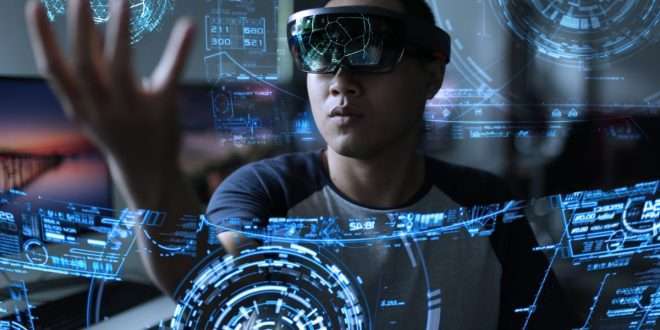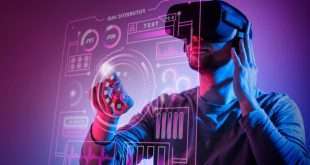In the fast-paced world of digital marketing, the quest for higher conversion rates (CRO) never ceases. To stay ahead in the game, businesses are constantly seeking innovative ways to engage their audiences and boost conversions. Enter Augmented Reality (AR) and Virtual Reality (VR) – two groundbreaking technologies that have the potential to transform the landscape of CRO. In this article, we delve deep into the realm of AR and VR integration in CRO and explore how these immersive experiences can be harnessed to unlock higher conversion rates.
Understanding Conversion Rate Optimization (CRO)
Before we dive into the impact of AR and VR, let’s briefly revisit the concept of Conversion Rate Optimization. CRO is the process of optimizing a website or landing page to increase the percentage of visitors who take the desired action, such as making a purchase, signing up for a newsletter, or filling out a contact form. It’s all about turning passive website visitors into active customers. With AR and VR integration, CRO takes a giant leap forward.
The Power of Immersive Experiences
AR and VR offer unique opportunities to create immersive experiences that captivate users like never before. Imagine a potential customer being able to virtually try on a pair of sunglasses or experience a virtual tour of their dream vacation destination. These experiences not only pique curiosity but also foster a deeper emotional connection, paving the way for increased conversions.
Enhancing Product Visualization
One of the biggest challenges in online shopping is the inability to physically interact with products. AR and VR bridge this gap by allowing customers to visualize products in a three-dimensional space. This enhanced product visualization significantly reduces purchase anxiety and boosts confidence, leading to higher conversion rates.
Personalization through AR and VR
Personalization is a key driver of conversions, and AR and VR take it to the next level. By analyzing user behavior and preferences, these technologies can deliver tailor-made experiences. For example, an AR-powered beauty app can suggest personalized makeup products, increasing the likelihood of a purchase.
AR and VR for Enhanced Customer Support
Customer support plays a vital role in shaping the overall customer experience. AR and VR can be leveraged to provide virtual assistance, troubleshooting, or product demonstrations, ensuring a seamless and satisfactory journey for the customer.
Overcoming the “Try Before You Buy” Barrier
The age-old marketing adage, “try before you buy,” holds true even in the digital realm. AR and VR enable customers to virtually test products before making a purchase. Whether it’s trying out furniture in their living room or test-driving a car, this hands-on experience eliminates doubts and accelerates conversions.
AR and VR in E-commerce
E-commerce is a domain where AR and VR can create a revolutionary impact. Virtual showrooms, AR-powered sizing guides, and interactive product catalogs provide an unmatched shopping experience, reducing return rates and increasing customer satisfaction.
Measuring and Analyzing AR/VR Performance
As with any marketing strategy, it’s essential to measure the effectiveness of AR and VR campaigns. Analytics tools can track user engagement, interaction times, and conversion rates, enabling marketers to fine-tune their immersive experiences for maximum impact.
The Mobile AR/VR Advantage
The widespread adoption of smartphones opens up a massive market for mobile AR and VR experiences. Marketers can tap into this potential by creating AR/VR applications that seamlessly integrate with mobile devices, making immersive experiences accessible to a broader audience.
Challenges and Future Prospects
While AR and VR offer promising opportunities, there are challenges to overcome, such as hardware limitations, high development costs, and user adoption. However, as technology evolves, these hurdles are expected to diminish, making AR and VR even more accessible and indispensable in CRO.
Final Words
The integration of AR and VR in CRO marks a paradigm shift in digital marketing. By offering immersive experiences, enhancing personalization, and overcoming barriers, businesses can unlock the potential of higher conversion rates. As the technology continues to evolve, embracing AR and VR will be the key to staying ahead of the competition and delivering unforgettable experiences to customers.
Commonly Asked Questions:
1. How do AR and VR impact Conversion Rate Optimization (CRO)?
AR and VR create immersive experiences that engage users emotionally and visually. By providing personalized interactions and overcoming traditional barriers, they lead to increased conversion rates in digital marketing.
2. What industries can benefit the most from AR and VR integration in CRO?
Industries like e-commerce, retail, travel, real estate, and automotive can benefit significantly from AR and VR integration to improve product visualization, customer support, and overall user experience.
3. What are the challenges in adopting AR and VR for CRO?
The challenges include high development costs, hardware limitations, and the need for user adoption. However, as technology advances, these challenges are expected to diminish.
4. How can AR and VR enhance product visualization in e-commerce?
AR and VR allow customers to virtually visualize products in real-world settings, such as trying on clothes, placing furniture in their homes, or test-driving vehicles, leading to increased confidence in their purchasing decisions.
5. Are AR and VR experiences accessible on mobile devices?
Yes, mobile AR and VR experiences are gaining popularity due to the widespread use of smartphones. Businesses can create applications that offer immersive experiences, making them accessible to a broader audience.
 webfily
webfily



